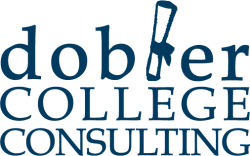The CSS/PROFILE: The “Other” Financial Aid Application
 The CSS/PROFILE went live on October 1st officially kicking off the start to the financial aid season. Ironically enough, many families don’t even know the CSS/PROFILE exists.
The CSS/PROFILE went live on October 1st officially kicking off the start to the financial aid season. Ironically enough, many families don’t even know the CSS/PROFILE exists.
It does and here’s what you need to know about it:
1. While every college requires a student to file a FAFSA to qualify to federal need-based aid, over 200 mostly private colleges require students to complete the CSS/PROFILE as well for consideration of scholarships.
2. Here in Connecticut that list includes: Connecticut College, Fairfield University, Quinnipiac University, Sacred Heart University, Trinity College, University of New Haven, Wesleyan University, and Yale University.
3. While the FAFSA is a free application, the CSS/Profile is not. The initial application is $25 and then each subsequent submission costs $16.
4. Unlike the FAFSA, a family’s home equity is taken into account as an available asset.
5. If a family owns a business, 100% of its equity will be assessed.
6. Assets held in the names of siblings will be considered parental assets and assessed as such increasing the parents’ EFC.
7. Only untaxed social security benefits for the student will be excluded whereas benefits for the parent will not be excluded.
8. Pre-tax contributions to flex-plans for healthcare and dependent care are assessed as untaxed income.
9. Schools have their own deadlines for when the CSS/PROFILE should be filed and these dates can range from as early as sometime in November for Early Decision or Early Action applicants to as late as February for students applying Regular Decision. When in doubt, families should always check the school’s website or call the financial aid office to verify deadlines.
As you can see, there’s a lot that goes into the CSS/PROFILE. It’s costly, it’s invasive and it’s just another hurdle standing in the way for many students and their parents.
If you would like some assistance filing the CSS/PROFILE as well as the FAFSA, contact me today. Like an accountant would with your taxes, I can help you gather the documents you need, assist you in the filing of both applications and then also help you with appeals should the need arise.
Here’s what other families like yours are saying about how Dobler College Consulting made a difference for them.




